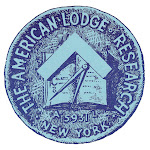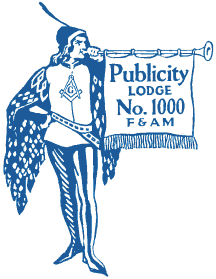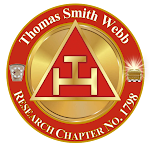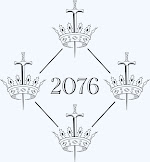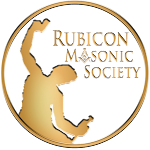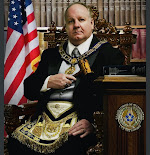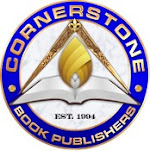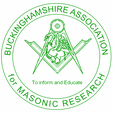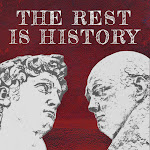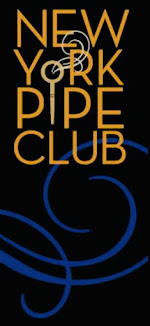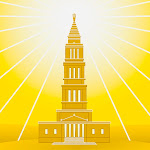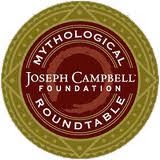Bro. John “Coach” Nagy will be the next guest in Craftsmen Online’s Reading Room. The ubiquitous and prolific builder of builders will be on hand to discuss one of his books, The Craft Perfected! Actualizing Our Craft.
Friday, December 27, 2024
‘Coach Nagy in the Reading Room’
Bro. John “Coach” Nagy will be the next guest in Craftsmen Online’s Reading Room. The ubiquitous and prolific builder of builders will be on hand to discuss one of his books, The Craft Perfected! Actualizing Our Craft.
Make sure you’re available Thursday, January 30 at 7 p.m. and budget a little time in advance to read the first thirty pages of this motivational and instructive book.
Feel free to read about the book here.
Click here for the material specific to this Reading Room meeting.
And here to submit questions to the panel and to join the event live on YouTube.
Enjoy.
Sunday, December 22, 2024
‘Grande Oriente d’Italia prevails in court’
The Grand Orient of Italy has won its court case against the government of that nation—for now—according to a ruling handed down last Thursday by the European Court of Human Rights that judged police searches and seizures of private documents were illegal and not “necessary in a democratic society.”
The Masonic Grand Orient sued Italy after several lodges were raided and had property, including membership lists, confiscated in 2017 as part of a government investigation of suspected links between Freemasonry and the Mafia. The confusing “P2” scandal was decades ago, and this progress helps erase its shadow.
The ECHR press release concerning this December 19 judgment says:
The European Court of Human Rights held, unanimously, that there had been a violation of Article 8 (right to respect for private and family life) of the European Convention on Human Rights.The case concerned a search of a Masonic association’s premises ordered in the context of a parliamentary inquiry into the Mafia. Paper and digital documents, in particular a list of names and personal data of more than 6,000 members of the association, were seized during the search.The Court found that there had been a lack of evidence or a reasonable suspicion of involvement in the matter being investigated which would have been sufficient to justify such a wide-ranging and indeterminate measure. Nor had the shortcomings in the search order been offset by sufficient counterbalancing guarantees, for example by an independent and impartial review. Indeed, as the system in Italy currently stands, Parliament has exclusive jurisdiction to rule on the validity of its decisions.The Court concluded that such a significant interference with the applicant association’s rights, involving the authorities examining and retaining a wide range of documents, including confidential information, had not been “in accordance with the law.” Nor had it been “necessary in a democratic society.”
The European Court of Human Rights was established by the Council of Europe in 1959 to address violations of the 1950 European Convention on Human Rights.
The court’s findings of facts include:
The applicant is a Masonic association registered under Italian law, Grande Oriente d’Italia. It was founded in 1805 and groups together several lodges.In 2013 the Parliamentary Commission of Inquiry on the phenomenon of mafias and other criminal associations, including foreign ones (Commissione parlamentare d’inchiesta sul fenomeno delle mafie e sulle altre associazioni criminali anche straniere) was set up. It was mandated, among other things, to conduct an inquiry into relations between the Mafia and Freemasonry because of revelations emerging from various criminal proceedings.On several occasions in 2016 the parliamentary commission of inquiry asked Dr. Bisi, the Grand Master of the applicant association, to provide a list of its lodges’ members. He repeatedly refused, citing confidentiality. He observed that the request was “a fishing expedition” as it neither mentioned ongoing investigations, nor any specific crimes allegedly committed by members of the association. He again refused to disclose names when summoned as a witness in January 2017.The parliamentary commission eventually, in March 2017, ordered a search of the applicant association’s premises. The search aimed at obtaining a list of anyone who belonged or had belonged to a Masonic lodge of Calabria or Sicily starting from 1990, with their rank and role, as well as information about all the lodges of Calabria and Sicily which had been dissolved or suspended from 1990 onwards, including the names of all their members and their personal files, any investigations carried out and decisions taken.The applicant association’s premises, including its archives, the library, and the personal residence of the Grand Master, and several computers were searched. It resulted in the seizure of numerous paper and digital documents, including lists of approximately 6,000 persons registered with the applicant association, as well as hard disks, flash drives and computers.The applicant association unsuccessfully challenged the search and seizure. The parliamentary commission made no ruling on a request to reconsider the search order under its own procedures, while the prosecuting authorities dismissed an application for a judicial review by the Constitutional Court of a conflict of jurisdiction between the powers of the State, and discontinued the investigation into a criminal complaint lodged by the applicant association.
The Grand Orient’s travails might not be over, however, as this court’s ruling is not necessarily final. For ninety days after December 19, “any party may request the case be referred to the Grand Chamber of the Court,” where a five-judge panel would decide if this case needs another look. If it rules further examination is required, the panel eventually would issue the final judgment. But if such a request is refused, this current ruling will stand, and will be sent to the Committee of Ministers of the Council of Europe for execution.
Congratulazioni, fratelli!
Saturday, December 21, 2024
‘Book on research lodges due next week’
A recently completed compendium of Masonic research bodies has been published and will be on sale next week. Masonic Research Lodges, Bodies, and Societies is coming St. John’s Day via Amazon and elsewhere. From the publicity:
A survey of research lodges, chapters, councils, priories, and societies around the world that are Masonic or related to Freemasonry. Entries focus on history, membership, meetings, and publications. Includes organizations that do not exclude “Irregular” Masons, such as women’s jurisdictions and co-Masonry.
Bro. Ken JP Stuczynski hails from the Grand Lodge of the State of New York, having been raised in West Seneca Lodge 1111. He sits as Master of Western New York Lodge of Research and is King in Thomas Smith Webb Royal Arch Chapter of Research. He is a 32° Scottish Rite Mason and a past Sovereign Prince; is a past High Priest of East Aurora Royal Arch Chapter 282; a Cryptic Mason; and a two-time Patron of Pond Chapter 853 in the Order of the Eastern Star. He serves as Assistant Grand Lecturer of the Erie District of New York, and a District Grand Lecturer of the Erie District in the Order of the Eastern Star; and Educational Officer for the 16th Capitular District of Royal Arch Masons.
Bro. Ken is a regularly published Masonic author on topics from technology and futurism to history and esotericism as a columnist in the Empire State Mason magazine and the Midnight Freemasons blog.
In addition to editing and publishing the Transactions of the Western New York Lodge of Research under his company, Amorphous Publishing Guild, he is author of Webmastering the Craft: Fraternity in a Digital World. Professionally, he owns Kentropolis Internet, a webhosting and development company providing web services for companies, community organizations, and individuals for more than twenty-five years. Under the division Masonic Digital Trust, it provides services to more than a hundred Masonic organizations, including hosting and support for MW Sites by Dan Pushee. He has been webmaster of nymasons.org (Grand Lodge of New York) and nyram.org (Royal Arch Grand Chapter of New York) for more than ten years.
Publisher: Cyphrglyffe (Dec. 27, 2024)
Language: English
Paperback: 284 pages
ISBN-10: 194981811X
ISBN-13: 978-1949818116
Item Weight: 7.5 ounces
Dimensions: 4.25 x 0.6 x 7 inches
Thursday, December 12, 2024
‘Azim is ready for 2025’
 |
| Monarch Mike Sikos |
Azim, The Handsomest Grotto in the Realm, has a robust schedule for 2025. From the publicity:
2025 Officers
Monarch Mike Sikos
Chief Justice Joseph Lee McMillen
Master of Ceremonies Pablo Reyna
Venerable Prophet Jason Cohen, Esq.
Treasurer Steven J. Baker, Esq.
Secretary Zachary N. Ostrow
Trustee (2022-25) William Neri, Esq.
Trustee (2025-26) Daniel Hogan
Trustee (2025-27) Brian Donlon
Doctor of Smiles Devashish Agarwal
Membership Chairman Victor Mann
Enchanted Lantern Chairman Z. Ostrow
Marshal Victor Marshall
Captain of the Guard Eric Larios
Upcoming Events
Tuesday, January 21
Social at Hill Country Barbecue
Friday, February 7
Grotto Day prep meeting (Masonic Hall)
Friday, March 7
Grotto Day Ceremonial (Masonic Hall)
Saturday, April 12
Social at The Blind Pig
Tuesday, May 27
Social at Haven Rooftop
Saturday, June 7
Barbecue (location TBD)
September (date TBD)
Cigar Night at Club Macanudo
October (date TBD)
Oktoberfest (location TBD)
November (date TBD)
Fall Ceremonial (Masonic Hall)
December (date TBD)
Annual Summoned Meeting
and Elections/Installation of Officers
Say, anyone hear from Zelica in Florida about the raffle?
Anyway, congratulations to Past Monarch Brian Donlon. I wish I could have gotten out more to support the Lucky 7 gatherings. My New Year’s resolution is “More Grotto!”
Friday, December 6, 2024
‘King Athelstan’s iPhone?’
Athelstan King,Lord among Earls,Bracelet-bestower andBaron of Barons,He with his brother,Edmund Atheling,Gaining a lifelongGlory in battle,Slew with the sword-edgeThere by Brunanburh,Brake the shield-wall,Hew’d the lindenwood,Hack’d the battleshield,Sons of Edward with hammer’d brands.
Tennyson knew what he was talking about. That’s excerpted from his poem “The Battle of Brunanburgh,” published in 1880. Athelstan of course was king of the Anglo-Saxons in the early tenth century, and is remembered as the first king of England. His significance in Masonic lore is summarized quickly by Albert Mackey in his Encyclopedia (first printed in 1873):
But this edition of The Magpie Mason was meant to be a quickie to inform you of the Athelstan merchandise available from The Rest Is History podcast.
 |
| The Rest Is History’s Athelstan phone case. |
On their X account, they joked “King Athelstan (r.924-939 AD) wouldn’t have understood what an iPhone is.” In the comments, Oliver Memories Bayley noted “Knew all about Bluetooth though.” Gotta love historian humor. Anyway, it’s the season of giving, etc., etc. Click here.
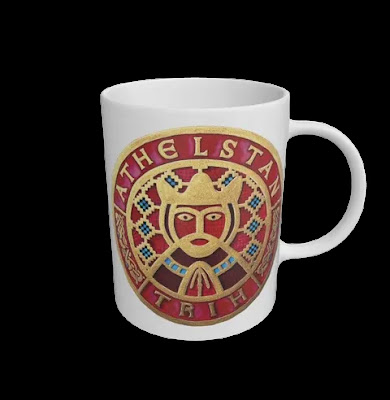 |
| An Athelstan mug for your mead. More gifts here. |
And click here to hear the podcast’s episode on Athelstan!
Wednesday, December 4, 2024
‘Philalethes to host Hamilton at Masonic Week’
Belated Happy 96th Anniversary wishes to the Philalethes Society, which reached that milestone Sunday.
Speaking of Masonic Week (see post below), the Society has two events among the February festivities on the calendar. On Friday the seventh at 7 p.m., it’ll be time for the annual banquet. The after dinner speaker will be Bro. Billy Hamilton of Texas, who will present “The Victorian Innovators.” From the publicity:
Bro. Hamilton will focus on Kenneth R.H. Mackenzie and his influential correspondence circle, including Major Frances George Irwin, John Yarker, and William Wynn Westcott. The title is inspired by J. Ray Shute and his own circle of innovators, who would later play a similar role in American Freemasonry. We will examine their friendships, alliances, and conflicts in their own words through their personal correspondence. He will also discuss the diverse degrees and rites they worked on, from those accepted in mainstream Masonry today, such as SRIA, the Red Branch of Eri, and the Red Cross of Constantine, to those now considered clandestine, including the Primitive Rite and Sat B’Hai.
The banquet is open to all Masonic Week attendees and their guests. Tickets are $60 and must be reserved at the Masonic Week 2025 website.
The following morning, at 10:30, the 97th Annual Meeting will open. Publicity again:
The Annual Assembly of the Philalethes Society will be held on Saturday, February 8 at 10:30 a.m. The meeting agenda includes annual reports from the Officers and the consideration of all matters which may lawfully come before it. The meeting is open to every Masonic Week attendee. All members of the Philalethes Society in good standing (dues current for 2025) are considered voting members.
In the meantime, this latest issue of the quarterly journal is fantastic, thanks in part to Marsha Keith Schuchard’s piece “Gershom Scholem and Marsha Keith Schuchard: A Most Unlikely Correspondence, 1975-1980.” Excerpted (and apologies for the lack of context):
The allusions to Jews and magicians in Swedenborg’s diaries present a difficulty to the historian, because they are couched in a peculiar, symbolic language. Moreover, Swedenborg confounds actual, identifiable people with anonymous “spirits,” though he later explained to the Queen of Sweden that all his spirit-conversations were based on actual acquaintances, whether from personal experience or from “reading.” Two Masonic scholars, Gabriele Rossetti (father of the painter) and Ethan Allen Hitchcock (military adviser to Abraham Lincoln) claimed that Swedenborg’s cryptic language and veiled allusions were a deliberate usage of Masonic terminology, which would be comprehensible to initiates but not to outsiders... . My own theory is that many of the characters were actual people and that others function like Luzzatto’s maggid, i.e., psychological projections of Kabbalistic instructors or exteriorization of mental images gained through Kabbalistic meditations.
It’s a dizzying paper, to say the least, but if you are part of, or at least interested in, quirky European systems of Freemasonry, this is for you. And if you’ve followed Schuchard’s singular field of research, this illustrates how she got there. It is a fascinating—and amusing in the academic milieu— conversation. Enjoy.
In addition, and also concerning The ALR as with the post below, the lodge’s WM aims to revive Knickerbocker Chapter, the Philalethes’ New York City group, for dining and education. Interested brethren should contact the Master.
Tuesday, December 3, 2024
‘Bunker Hill at Masonic Week’
As reported here earlier this year, the Worshipful Master of The American Lodge of Research is interested in seeing that lodge’s brethren revive (or maybe start anew) a local Order of the Sword of Bunker Hill to give The ALR something that combines light ritual work and a little conviviality. Well it looks like the Grand Order of the Sword of Bunker Hill has joined the schedule of Masonic Week offerings, becoming the first event for the Wednesday night.
So, if any ALR Masons plan to attend this annual weekend in February in Virginia, and will be free on February 5 to receive the Order of Bunker Hill, please contact the Master and maybe bring the project closer to fruition.
Monday, December 2, 2024
‘Live music: Paris for Christmas’
Among the yuletide highlights in New York City is the anticipated concert organized by Bro. Erik Carlson, musical director of my lodge, Publicity 1000. This time, the free festivities will be “Paris for Christmas.” From the publicity:
Thursday, December 19 at 7 p.m.
Church of St. Thomas More
65 East 89th Street
Free admission; reception to follow
This Year, Let’s All Go
to Paris for Christmas!
🎄 Christmas Oratorio by Camille Saint-Saens
🎄 Four Christmas Motets by Francis Poulene
🎄 French Organ Music by Alexandre Guilmant and Octave Parisot
🎄 Featuring the St. Thomas More Concert Choir under the direction of Erik E. Carlson with the St. Thomas More Christmas Orchestra of strings, harp, and organ.
Don’t miss it!
Erik E. Carlson will conduct the orchestra as well as play organ and direct the choir. Erik studied piano from an early age that lead to his formal conservatory training where he graduated from the Hartt School of Music with degrees in both keyboard performance and music theory. He has been a professional church musician in New York City for the last twenty years, specializing in sacramental service playing.
Pursuing his interest in the nineteenth century organ music of France, Erik has played throughout the Saône-et-Loire department of Burgundy, including at the parish churches of Paroisse Saint-Louis, Saint-Gengoux-le-National, Saint-Georges, Sercy, and Église Saint-Didier, Joncy.
At St. Thomas More, he continues this level of French organ music and enjoys the Lively-Fulcher organ for its unique sounds and colors.
 |
| Talk about publicity, here Bro. Erik shows off the concert announcement on the wall above the Bowery Mural. |
He is an active member of the American Guild of Organists, the Association of Anglican Musicians, and the National Arts Club.
Outside of church music, Erik enjoys time with his family, including his dearly loved beagle, Brogan.
Sunday, December 1, 2024
‘Civil War researchers to meet’
You know it was a rejuvenating weekend when it feels like you vacationed for a month. Be that as it may, the next meeting of Civil War Lodge of Research 1865 is near! The brethren will gather at Federal Point Lodge 753 in North Carolina on Saturday. The itinerary:
Friday, December 6
Supper at 6 p.m.
341 College Road No. 55
Wilmington
Saturday, December 7
Federal Point Lodge 753
417 Harper Avenue
Carolina Beach
9 a.m. coffee & donuts
10 a.m. meeting
11:30 a.m. adjourn
Lunch at noon
250 Racine Drive, Unit 15, Wilmington
Afternoon:
1610 Fort Fisher Blvd. S.
Kure Beach
If interested:
1 Battleship Road, NE, Wilmington
Dinner 6 p.m.
317 College Road, Wilmington
There are abundant hotels in the area and prices vary widely.
Upcoming Schedule:
April 12: Charleston, South Carolina
July 12: Chattanooga, Tennessee
October 11: Montgomery, Alabama
December 6: Highland Springs, Virginia (Thirtieth Anniversary!)
Tuesday, November 26, 2024
‘Cryptic congratulations’
With just a few minutes to spare, let me extend happy anniversary wishes to my Cryptic Masonry council and the Grand Council, both of which took legal form in New Jersey on Monday, November 26, 1860. And congratulations to newly installed M.I. Grand Master Daryll Slimmer!
Scott Council 1 is older than the Most Puissant Grand Council of Royal and Select Masters of the State of New Jersey, having been Pennsylvania’s Council No. 12 for a few years before the Grand Council was organized.
Grand Master Slimmer says a top prerogative is championing education “for every Council to reach the point where having something educational at each Assembly is the norm, and to not have something presented is unthinkable,” he explained to me today.
That’s what I like to hear!
‘Primer on Kabbalah’
The side of Jewish mysticism named Kabbalah is vexing to me and to many others, and is especially confusing in Freemasonry. Writing for Aish, Rabbi Mordechai Becher gives an introduction in this recent article.
The following is copyright © 2024 aish.com.
What is Kabbalah
and what are its origins?
What did Sir Isaac Newton, the great 18th century scholar the Vilna Gaon, and the Lubavitcher Rebbe have in common? All of these remarkable figures studied Kabbalah, the ancient Jewish mystical tradition. The Oxford Dictionary1 defines mysticism as “spiritually allegorical; occult, esoteric; of hidden meaning, mysterious and awe-inspiring” — apt descriptions of Kabbalah. Yet to understand Kabbalah fully, it helps to consider how Judaism itself views this profound tradition.
Kabbalah is not red wrist bands, misspelled Hebrew tattoos, sweat lodges or celebrity endorsements. Kabbalah, which means “received,” signifies a wisdom passed down through generations, tracing back to Moses at Mount Sinai.2
It is also known as sod, meaning “secret,” or sitrei Torah, “the secrets of the Torah.” These mysteries delve into realities beyond the physical and linguistic realm, a domain that cannot be entirely articulated. Hence, Kabbalah remains a “secret” or “code,” even as it is shared and studied.
Kabbalah offers a vision of total reality—one that is primarily spiritual—contrasting with science, which seeks to explain the physical, observable world. A core teaching in Kabbalah is that what we perceive with our senses represents only a partial truth. True reality, in Kabbalistic thought, is Divine reality, present here and now but often unnoticed. Kabbalah strives to help practitioners connect to this higher reality, enriching and aligning our lives with a more comprehensive truth. Such knowledge cannot rely solely on sensory experience or logic; it requires revealed wisdom.
Given its complexity and depth, Kabbalah is traditionally studied by mature individuals with strong moral character and foundational Torah knowledge. Its study involves understanding the spiritual fabric of existence, the nature of God’s relationship with the world, and our place within this relationship. Errors in understanding Kabbalistic teachings can have serious spiritual consequences, underscoring the importance of preparedness and ethical maturity in its study.3
Kabbalah is part of the Jewish Oral Tradition, believed to have been conveyed by God to Moses on Mount Sinai and during the subsequent journey through the Sinai desert. References to its wisdom appear throughout Jewish history under various terms, and over time, different aspects have been progressively revealed.
One of the earliest Kabbalistic texts is Sefer Yetzirah (“The Book of Formation”), traditionally attributed to the patriarch Abraham or great Talmudic sage Rabbi Akiva. Another significant work is Sefer HaBahir (“The Book of Illumination”), attributed to Rabbi Nechunya ben HaKanah of the first century CE.
 |
| Sefer Yetzirah Wheel with Tree of Life and Hebrew letters. |
The most influential text of Kabbalah is the Zohar (“Book of Splendor”), written by Rabbi Shimon bar Yochai and his students and composed around 200 CE. Written in Aramaic, the Zohar spans thousands of pages, largely formatted as a mystical commentary on the Torah and other biblical books, including sections like the Tikkunei Zohar, which offers 70(!) interpretations of the Torah’s first word, “Bereshit” (“In the beginning”).
Among the great Kabbalistic sages were Rabbi Moses Cordovero, Rabbi Isaac Luria (the “Ari”), and Rabbi Chaim Vital, all of whom lived in Safed in the 16th century. Later figures included Rabbi Moshe Chaim Luzzatto (Italy, 18th century), the Gaon of Vilna (Lithuania, 18th century), and Rabbi Shneur Zalman of Liadi (founder of the Chabad Chassidic movement, Lithuania, 18th century).
Areas of Study
Kabbalah encompasses five primary areas of study, which sometimes overlap:
1. Ma’asei Bereshit4 – “The Deeds of Creation”: This explores how an infinite God created a finite world, and the paradox of God permeating time and space while allowing the material world to exist.
2. Ma’asei Merkava5 – “The Deeds of the Chariot”: Just as a chariot enables its driver to affect a battlefield while remaining separate from it, this area examines God’s providential interaction with the world while remaining unaltered by it.
3. Ta’amei Hamitzvot6 – “Reasons for the Commandments”: Here, Kabbalists explore the spiritual purpose of the commandments, how they link body and soul, and the way they harmonize the physical and spiritual realms, affecting all levels of existence.
4. Remez (Hints) – Kabbalistic interpretations of verses, stories, and symbols in the Torah offer deeper meanings, often through methods beyond literal interpretation.
5. Beyond these categories, Kabbalah also includes practical guidance for meditation,7 prayer,8 and contemplation of the many Names of God found in Jewish texts. Kabbalists provide mystical insights for observing the commandments, enabling practitioners to engage with their spiritual dimensions fully.9
The Ten Sephirot
One of the foundational concepts in Kabbalah is the notion of the Sephirot. The Ten Sephirot represent God’s revealed creative energies through which all existence is sustained and through which the universe operates. These ten attributes are not God Himself but rather expressions of His creative power within a finite reality. As divine energy manifests in the world, it does so in these ten distinct modalities, or Sephirot.10
A vivid example of this can be seen in the relationship between two specific Sephirot: Chesed (loving-kindness) and Gevurah (judgment). Chesed is characterized by expansiveness and generosity, while Gevurah embodies restraint, discernment, and limitation. These qualities are akin to green and red traffic lights—if all lights were green, there would be chaos; if all were red, movement would cease.11
 |
| aish.com |
Kabbalists also delve into the layered nature of the human soul,12 the stages of creation,13 and the various names of God in the Torah, referring to Him primarily as Ein Sof, or “the Infinite.”
The Zohar, a central Kabbalistic text, connects the Sephirot to prominent figures in the Torah: Abraham embodies Chesed, Isaac represents Gevurah, and Jacob stands for Tiferet. Since humanity is intended to serve as a bridge to the Divine, even the human body reflects this Sephirotic structure. Jewish practice often favors the right hand in fulfilling commandments, symbolizing the Sephira of Chesed and emphasizing kindness as an attribute to prioritize over Gevurah, represented by the left.
Rabbi Isaac Luria, the Ari
One of the most influential figures in Kabbalistic history was Rabbi Isaac Luria, known as the Ari, an acronym that also means “Lion.” Growing up in Cairo, he later moved to Safed in northern Israel in the 16th century, where, despite his short life—he died at only 38—he transformed the study of Kabbalah. His revolutionary teachings introduced concepts and structures that would shape Jewish mysticism profoundly. His student, Rabbi Chaim Vital, recorded many of the Ari’s teachings in a multi-volume work, helping to preserve and disseminate them. Other figures who furthered his ideas include Rabbi Yisrael Sarug, Rabbi Moshe Chaim Luzzatto (Italy), Rabbi Shalom Sharabi (Yemen and Jerusalem), and the Gaon of Vilna (Lithuania).
Authentic Kabbalah offers a lens through which each moment, object, and action is infused with meaning and purpose. It brings sanctity to the ordinary and guides us toward the ultimate goal of unity: unity in thought, speech, and deed; unity between individuals; and unity between all of creation and God.
Featured Image above: Painting by Yoram Raanan, Day 7. Click here to visit the artist’s website.
1. The Concise Oxford Dictionary, Fifth Edition, 1972
2. Nachmanides, Commentary on Genesis 1:1
3. Introduction to Pachad Yitzchak, Rabbi Yitzchak Hutner
4. Mishnah Chagiga 2:1
5. Ibid.
6. The Ra’aya Meheimnah section of the Zohar. Taamei Hamitzvot, Rav Menachem Recanati
7. See, for example, Jewish Meditation: A Practical Guide by Aryeh Kaplan
8. E.g. Inner Worlds of Jewish Prayer by DovBer Pinson
9. E.g. Sefiros—Spiritual Refinement Through Counting the Omer by Yaacov Haber and David Sedley
10. Rabbi Moshe Cordovero, Pardes Rimonim
11. Analogy heard from my dear friend, Rabbi David Solomon.
12. Nefesh, Ruach, Neshama, Chaya, Yechida
13. Atzilut, Briah, Yetzirah, Asiyah - ABIY”A
Labels:
Aish,
Judaism,
Kabbalah,
Rabbi Mordechai Becher,
Yoram Raanan,
Zohar
Thursday, November 21, 2024
‘Prestonian on Craftcast’
 |
| Craftcast hosts with today’s guest. |
In the episode of Craftcast published today, the hosts talk with RW Simon Medland, who has been chosen to serve as the United Grand Lodge of England’s Prestonian Lecturer for 2025. Craftcast is the official podcast of the UGLE. From the publicity:
In the latest episode of Craftcast, James, Shaun, and Stephen are joined by special guest Judge Simon Medland KC, the Deputy Provincial Grand Master of Cheshire and the 2025 Prestonian Lecturer.
Simon shares his journey within Freemasonry, tracing his roots as a fourth-generation Freemason and recounting his appointment as the Lecturer for the upcoming year.
Join us for an in-depth exploration of the history and significance of the Prestonian Lecture, including its origins and development over the years. Simon also gives us some insight on the topic of his upcoming paper: the rich heritage of the Province of Cheshire as it approaches its Tercentenary–the first Province to achieve such a significant milestone.
Craftcast is the official podcast of the United Grand Lodge of England, the governing body of Freemasonry in England, Wales, the Channel Islands, the Isle of Man and Districts overseas.
In every episode, Shaun Butler, James Dalton and Stephen Whatley are chatting all things Freemasonry. They ask the big questions, talk about their experiences and interview special guests from across UGLE.
Craftcast is the podcast for everyone from seasoned Freemasons to those just curious about what we do, so please come along for the ride.
Wednesday, November 20, 2024
‘Rocket debris damages GL of Israel building’
 |
| The view of the neighborhood from a window in the Grand Lodge building after a rocket strike Monday night in Bnei Brak, Israel. |
The office building wherein the headquarters of the Grand Lodge of Israel is located in a Tel Aviv suburb was damaged Monday, according to the Grand Lodge’s social media. No injuries inside were mentioned, but The Times of Israel and others have said five people outdoors were hurt, one seriously.
 |
| One of the shattered windows. |
The Israeli government said the projectile had been launched from inside Lebanon. The damage to the Vita building, on Ben Gurion Street, was said to be shattered windows and breakage to ceilings, as depicted in these photographs shared by the Grand Lodge.
 |
| Firefighters respond to the Grand Lodge premises inside a commercial property. |
“Barukh HaShem,” as the faithful say in prayer when things could be worse.
Tuesday, November 19, 2024
‘Founding Brothers: Associations, Societies, and Clubs’
Historic Peachfield, once the home turf of John Skene, the first Freemason in the New World, hosts inviting programs that educate in early American culture. One of these events in the New Year will feature a Brother Mason well known about the apartments of the Temple.
Bro. Erich Huhn is Secretary of New Jersey Lodge of Masonic Research and Education 1786, and Junior Deacon of The American Lodge of Research in New York City. Also, he is a Ph.D. candidate, specializing in nineteenth century American Freemasonry, at Drew University.
From the publicity:
February First Sunday
Founding Brothers:
Associations, Societies,
and Clubs
Sunday, February 2
2-4 p.m.
Presented by Erich Morgan Huhn, a presentation on how colonial and early republic society was made up of myriad associations, societies, and clubs that sought to bring order and to form an important foundation from which modern society was built.
Peachfield is a restored country plantation house originally built in 1725, with an addition erected on the west side on the home completed in 1732. The name “Peachfield” comes from the property’s first settler, John Skene, the first Freemason resident on record in the colonies, who purchased the 300-acre property in the late seventeenth century.
Upon Skene’s death in 1695, Henry Burr purchased the property.
Later, Henry built the east portion of the home in 1725. His son John Burr built the west portion in 1732. The home remained in the Burr family for 200 years. In 1931, Norman and Miriam Harker purchased Peachfield. The house had virtually been destroyed by fire two years earlier. They engaged the services of R. Brognard Okie, a well-known Philadelphia architect, to restore the home in the colonial revival style which became popular in the early 20th century.
Three years prior to her death in 1965, Mrs. Harker bequeathed Peachfield and its surrounding 120 acres of land to The National Society of The Colonial Dames in The State of New Jersey.
Now used as the Society’s state headquarters, the Dames of New Jersey have honored Mrs. Harker’s wish to keep the property as it “ has always been,” and have maintained Peachfield as a house museum.
Surrounding farm lands adjacent to the house are still farmed as they have been for more than 300 years.
Located at 180 Burrs Road, Westampton, New Jersey.
The National Society of The Colonial Dames of America in The State of New Jersey, founded in 1892, maintains two museum properties: Peachfield in Westampton, New Jersey and the Old Schoolhouse in Mount Holly, New Jersey. We invite you to visit and learn about New Jersey’s Quaker roots and heritage at both of these historic sites. Both are listed on the National Register of Historic Places.
It’s not easy envisioning New Jersey as having Quaker roots, but I leave that to the historians.
Bro. Erich will appear at the lectern of The ALR the following month, on March 31, to give what I’ll surmise will be a related talk on Alexis de Tocqueville in a double bill with Bro. Chris Ruli, who will discuss Lafayette and Freemasonry, but more on that later.
Subscribe to:
Posts (Atom)





